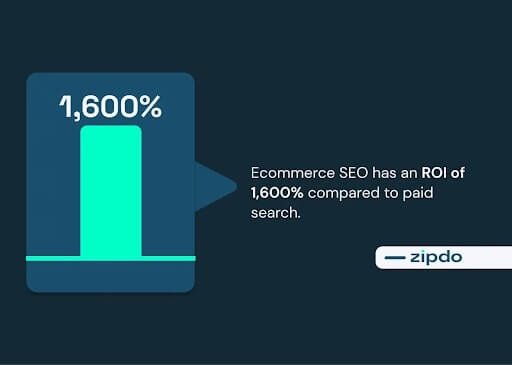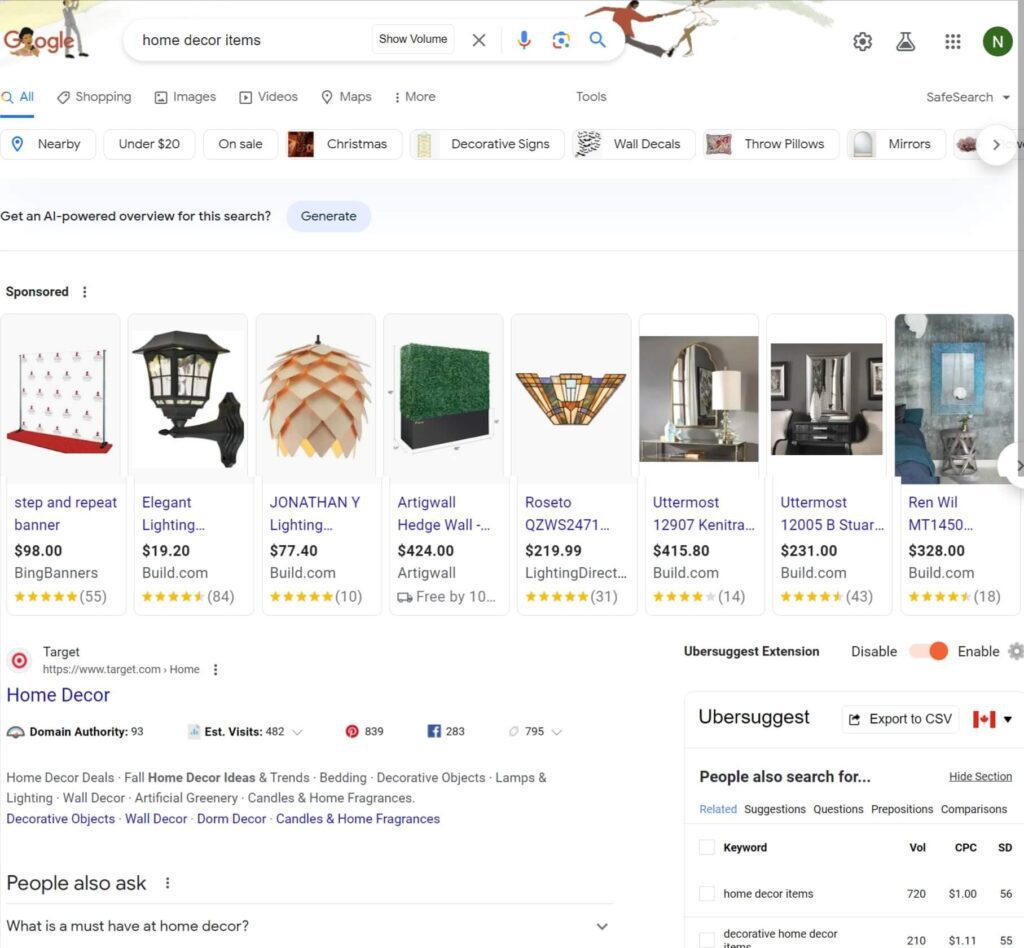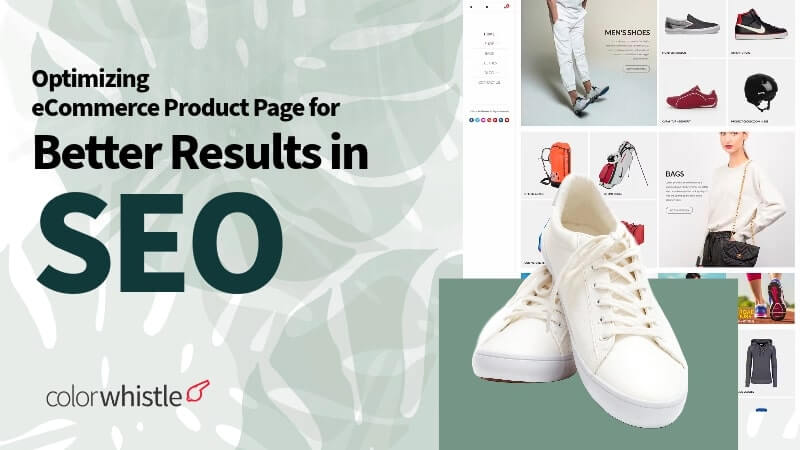Nearly half of consumers—46%—initiate their search for products using Google. Have you ever wondered why some products appear at the top of your search results while others don’t? Imagine you’re searching for ‘best running shoes for women.’ In a vast sea of online options, Google sifts through countless websites to deliver its results. This raises an important question: Which results will appear at the top?
This is where optimizing your e-commerce product page for SEO comes into play. By finely tuning your product pages with effective SEO strategies, you can significantly increase their visibility on search engine results pages (SERPs). This means more potential customers will discover your products when searching for what you offer. To achieve this, consider partnering with a skilled eCommerce website development company that understands how to create sites designed for both user experience and search engine optimization.

What is E-commerce Product Page SEO?
E-commerce Product Page SEO refers to optimizing individual product pages on an online store’s website to improve their visibility in search engine results. E-commerce Product Page SEO aims to attract organic (non-paid) traffic to these specific pages, ultimately increasing the likelihood of converting visitors into customers.
How to Optimize E-commerce Product Pages for Better Results in SEO
Many e-commerce businesses mistakenly believe that visitors reach their website through the homepage or a category page and then navigate to product pages. This is not the case, and it’s a missed opportunity.
People often land directly on product pages as a result of organic searches, paid ads, or social media posts. If your product pages aren’t optimized for SEO service, you’re missing out on a valuable source of traffic and sales. Make sure your product pages are central to your SEO strategy by including relevant keywords throughout the page, writing informative and engaging product descriptions, and using high-quality images and videos.
eCommerce store maintenance checklists are always included in these SEO best practices.

Essentials of E-commerce Product Page SEO
1. Keyword Optimization
Researching and incorporating relevant keywords into product titles, descriptions, and meta tags to align with search queries.

Understand Your Audience
Identify your target audience and understand their preferences, needs, and how they search for products online. Consider factors such as language, location, and demographics.
Utilize Product Attributes
For example, if you sell handmade leather wallets, use terms like “handcrafted leather wallets” or “genuine leather wallets.”
Brainstorm Relevant Terms
Make a list of potential keywords related to your product. Think about the terms your customers might use when searching for products similar to yours.
Check Trending Topics
Stay updated on industry trends and incorporate relevant keywords related to trending topics in your product category.
Use Keyword Research Tools
Google Keyword Planner, SEMrush, and Ahrefs., etc
Evaluate Seasonal Keywords
For instance, “winter jackets” or “summer dresses.”
Focus on Long-Tail Keywords
Long-Tail Keywords: “Customized hand-stitched leather wallets with coin compartments,” “Handmade artisan leather belts designed exclusively for men.”
Balance Search Volume and Competition
Balancing search volume and competition is a crucial aspect of developing a successful SEO strategy.
Consider Search Intent
Find out what users looking to purchase specifically.
Use Synonyms and Variations
For example, if you sell “running shoes,” also consider terms like “jogging shoes” or “athletic footwear.”
Analyze Competitor Keywords
Explore competitors’ sites to discover keywords
Monitor and Adjust
Regularly monitor performance metrics. If “Handmade leather wallets” is driving high traffic but low conversions, adjust the strategy or experiment with variations.
Use Location-Specific Keywords
Handmade leather products in the USA.
2. Product Descriptions
Crafting unique and compelling product descriptions that not only showcase features but also appeal to both search engines and human users.
Compelling product descriptions are key to driving purchases. Keep them personal and engaging, highlighting the benefits and features without overloading them with details—avoid lengthy essays as they tend to lose the interest of potential buyers.
3. Image and Video Optimization
Optimizing product images for search by using descriptive file names and adding alt text to enhance accessibility and keyword relevance. Here are some best practices to ensure your product images are optimized effectively.
- Choose the Right File Format: Use compressed image formats like JPEG for photographs and PNG for images with transparency. This helps maintain quality while reducing file size.
- Optimize Image Size: Resize images to the exact dimensions required on your product page. This prevents unnecessary load times and improves overall page speed.
- Compression Without Compromising Quality: Utilize image compression tools to reduce file sizes without sacrificing image quality. This is vital for faster page loading times.
- Utilize Descriptive Filenames: Rename your image files with descriptive and relevant names that include keywords associated with the product.
- Implement Alt Text: Add detailed and keyword-rich alt text to your images. Alt text not only improves accessibility for users with visual impairments but also contributes to SEO.
- Responsive Images: Ensure that your images are responsive and adapt well to various screen sizes.
- Consider Image Sitemaps: Include your product images in an image sitemap. This helps search engines index and understand your visual content, potentially improving visibility in search results.
- Use High-Quality Images: Prioritize high-resolution images to showcase product details. However, balance this with file compression to maintain optimal page load times.
- Implement Lazy Loading: Employ lazy loading for images, so they only load as the user scrolls down the page. This enhances the initial page load speed.
- Utilize Image CDN (Content Delivery Network): Distribute your images across a network of servers using a CDN. This reduces the load on a single server, resulting in faster image loading times for users globally.
- Implement Image Carousels Wisely: If using image carousels, be mindful of performance implications. Optimize the images within the carousel and ensure it doesn’t negatively impact page speed.
- Enable Browser Caching: Set up your server to enable browser caching specifically for images. This allows repeat visitors to load images from their local cache, reducing server load and speeding up page loads.
- Test Load Times: Regularly test the load times of your product pages using tools like Google PageSpeed Insights. Address any issues affecting image loading speed.
4. URL Structure
Creating clean and SEO-friendly URLs for each product page, making it easier for search engines to understand the content.
5. User Experience (UX)
Attracting users isn’t enough to make them a purchase; you should ensure that the product page provides a positive and seamless user experience, including fast loading times, clear navigation, and mobile responsiveness.
Baynard’s research reveals that only 15% of the leading 71 websites in the United States and Europe boast a commendable product page user experience (UX). Additionally, the survey highlights that none of the examined sites achieved flawless UX performance.
6. Customer Reviews
Encouraging and showcasing customer reviews, as user-generated content adds credibility and can positively impact search engine rankings.
7. Internal Linking
Implementing a strategic internal linking structure that connects related products or categories, aiding both user navigation and search engine understanding of site hierarchy.
8. Schema Markup
Adding structured data markup to provide search engines with additional information about the product, potentially leading to enhanced search result features like rich snippets. Before releasing it to production, ensure that your Schema markup is accurate by double-checking it.
9. Social Media Integration
Integrating social sharing buttons and metadata to encourage users to share products on social media platforms, indirectly contributing to SEO.
Organize a contest for user-generated content, and amplify its impact on product page SEO by sharing the images across social media platforms.
10. Regular Updates
Keeping product pages up-to-date with the latest information, pricing, and availability, reflecting a commitment to accuracy and relevance.
11. Mobile Optimization
Make sure your product pages work perfectly on mobile devices, offering a smooth and user-friendly experience. With more people shopping on their smartphones, it’s essential to have mobile-friendly pages for better usability and SEO.
12. Page Load Speed
Speed up your product pages for quick loading. Slow pages can cause visitors to leave and hurt your search rankings. You can improve loading times by reducing image sizes, simplifying code, and using browser caching.
13. Unique Content
Create unique product descriptions for every item to avoid duplicate content issues. This not only helps improve your SEO rankings but also ensures that customers receive detailed and accurate information about your products. Personalized descriptions can make your products stand out and enhance customer engagement.
14. Trust Signals
Incorporate trust elements such as badges, secure payment icons, and satisfaction guarantees on your product pages. These symbols help reassure customers that their purchases are safe and your site is reliable. Building this trust can lead to higher customer confidence and better conversion rates.
15. Call-to-Action (CTA)
Use clear and compelling call-to-action buttons on your product pages to guide users toward making a purchase. Phrases like ‘Buy Now’ or ‘Add to Cart’ should be easily visible and inviting. Effective call-to-action buttons can greatly enhance user experience and drive more sales.
16. Product Availability Information
Make sure to clearly show stock availability and shipping details on your product pages. This level of transparency helps customers make informed decisions and can reduce the chances of cart abandonment.
17. Breadcrumb Navigation
Implement breadcrumb navigation to make your site easier to navigate for users and to help search engines understand its structure better. Breadcrumbs not only improve user experience by showing a clear path but also support your SEO efforts by establishing a more organized site hierarchy.
18. Analytics Tracking
Use tools like Google Analytics to track how visitors interact with your product pages. Analyzing metrics like bounce rates, session duration, and click paths can give you insights into user behavior. This data helps you identify areas for improvement and make strategic decisions for further site optimization.
Wrapping Up
In the fast-paced world of online retail, success is more than just about keywords; it’s about creating a seamless shopping experience. To truly thrive, partner with a trusted e-commerce SEO company that offers specialized SEO services. By refining your strategies and focusing on both search engines and customer needs, you can boost your visibility and build a stronger connection with your audience. Keep evolving, and watch your e-commerce business grow in the digital marketplace.
Browse through our ColorWhistle page for more related content and to learn about our services. To get in touch with us and learn more about our services, please visit our Contact Us page.
What’s Next?
Now that you’ve had the chance to explore our blog, it’s time to take the next step and see what opportunities await!





